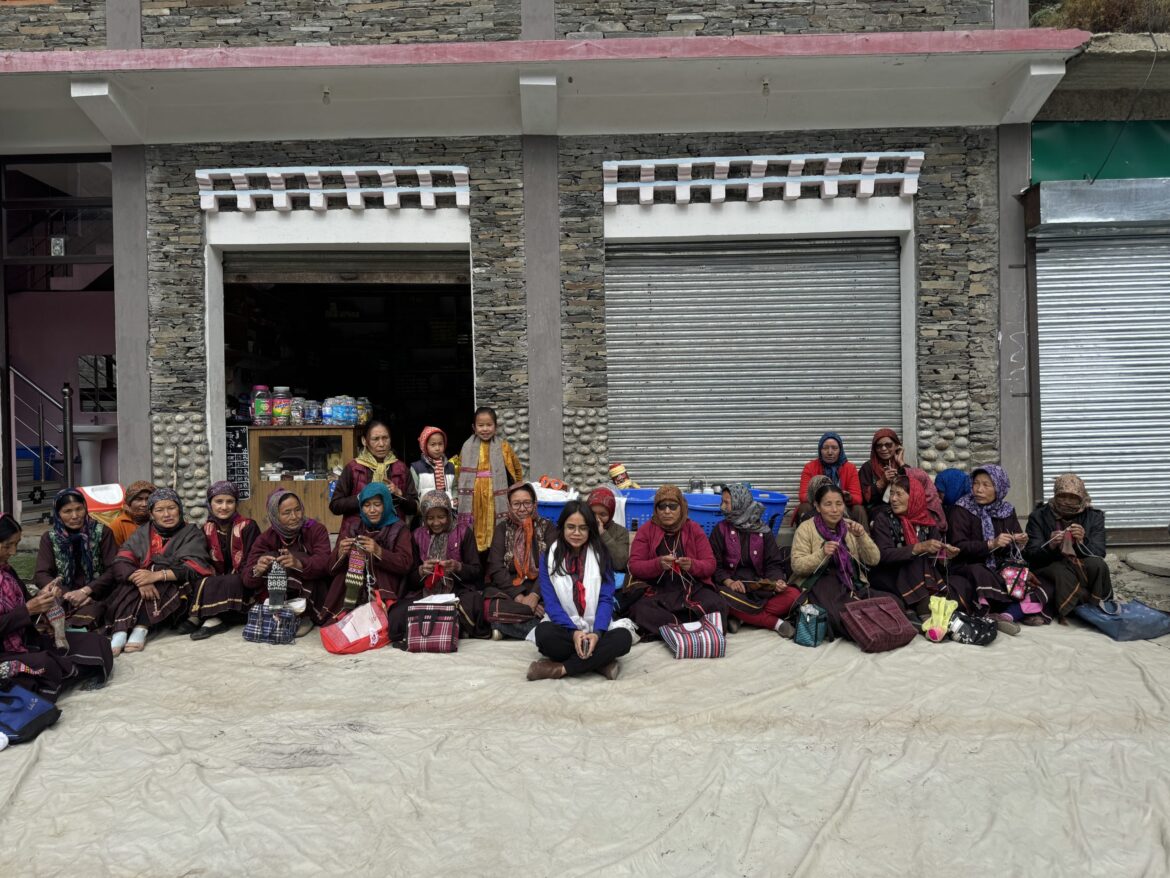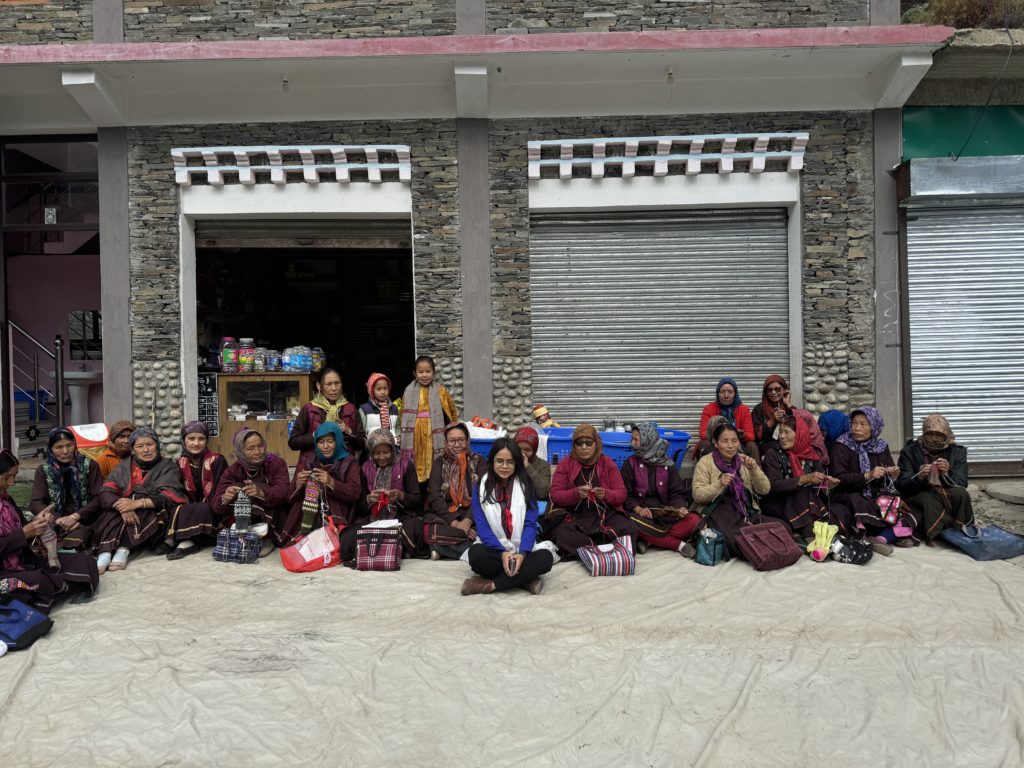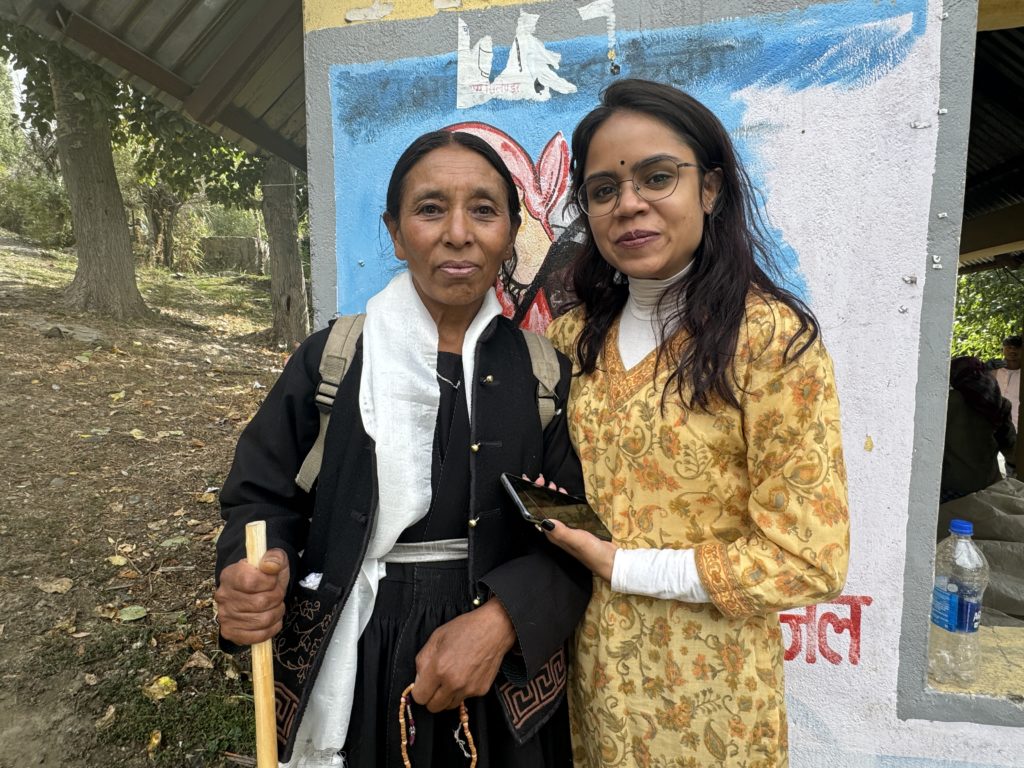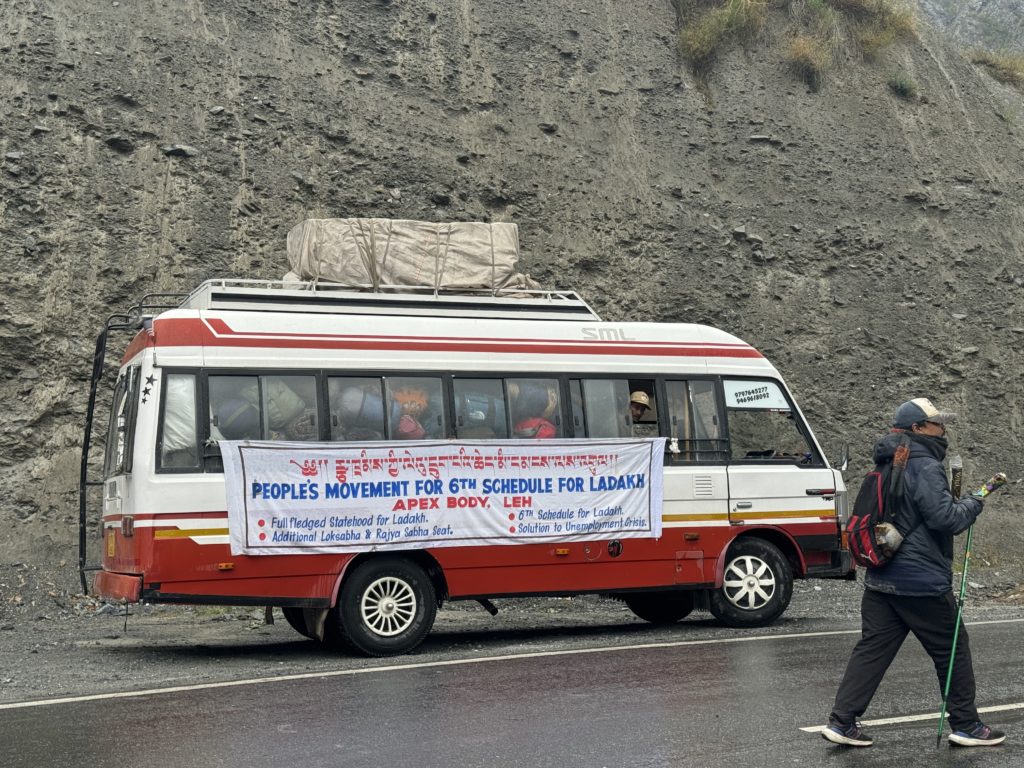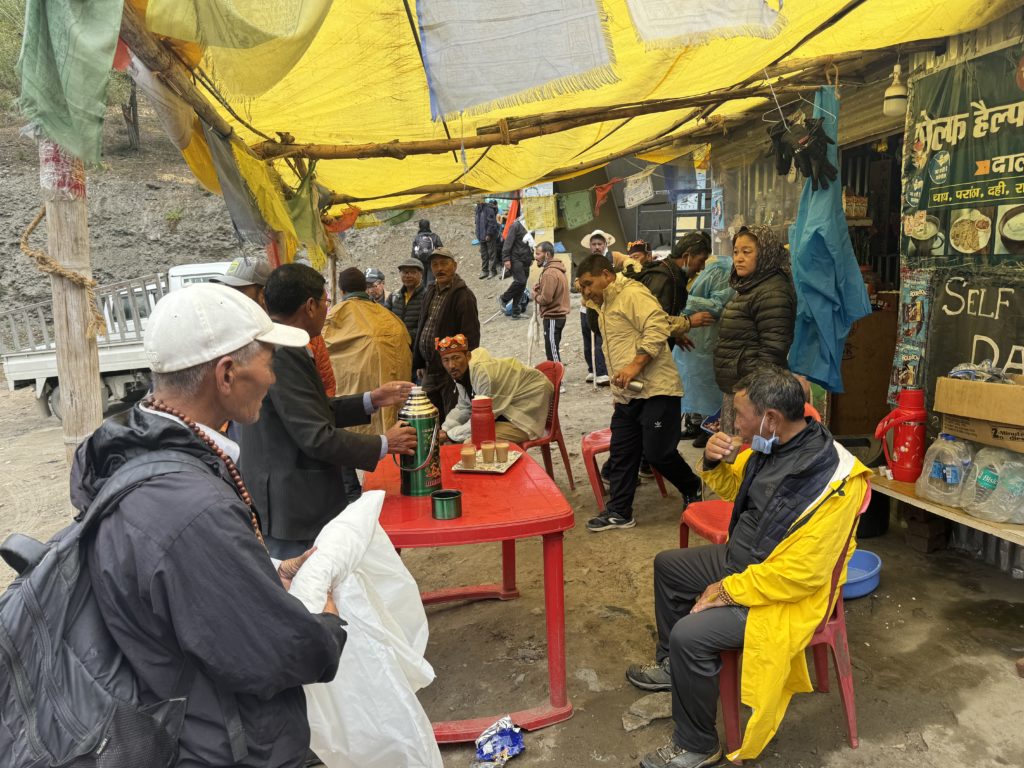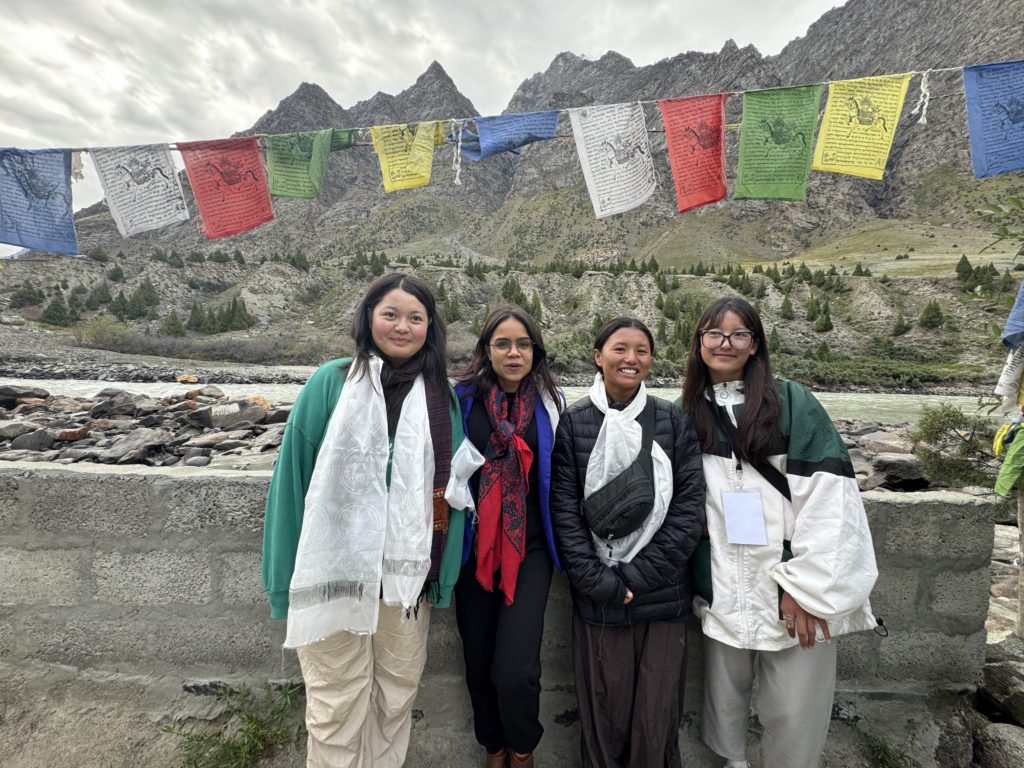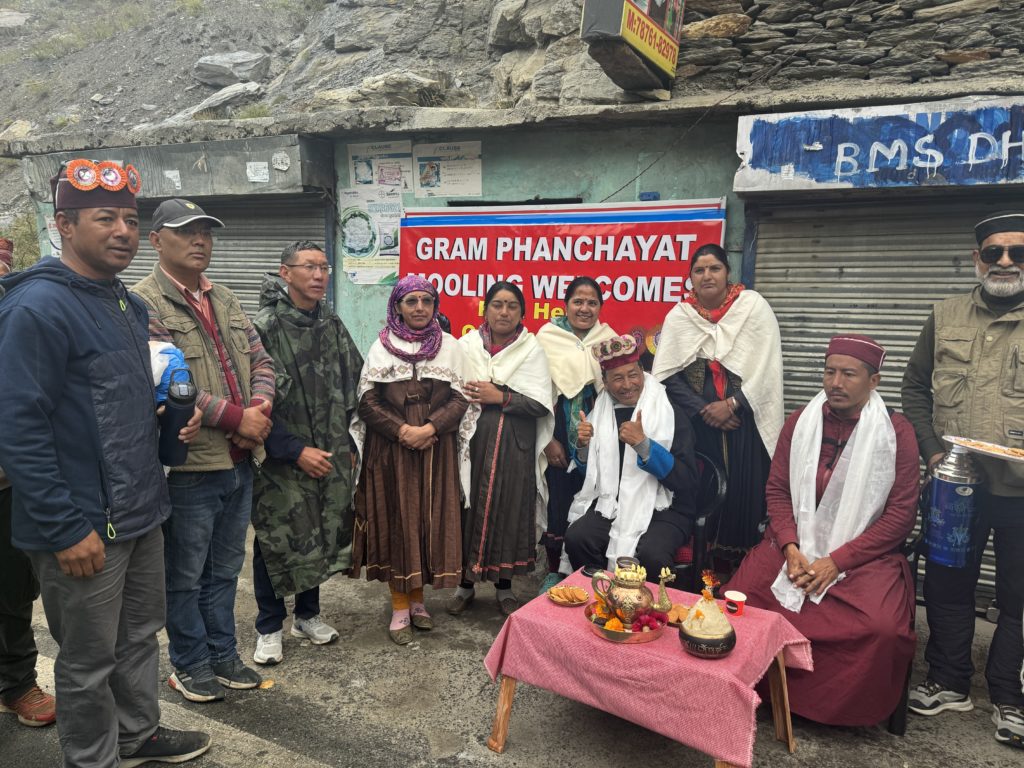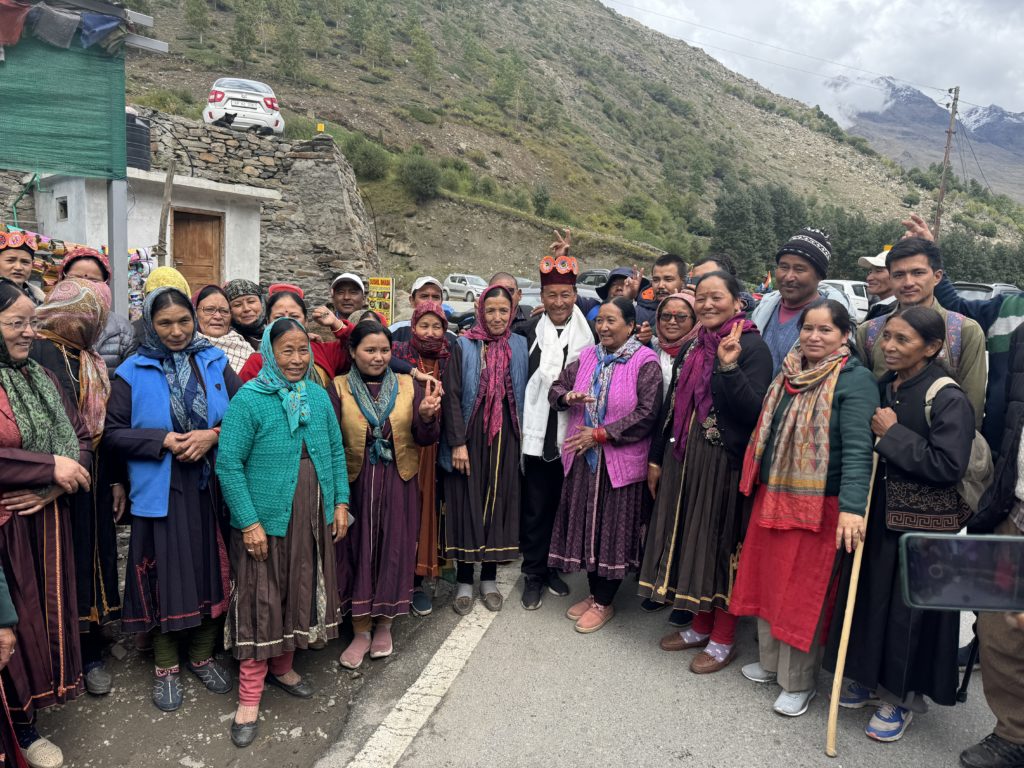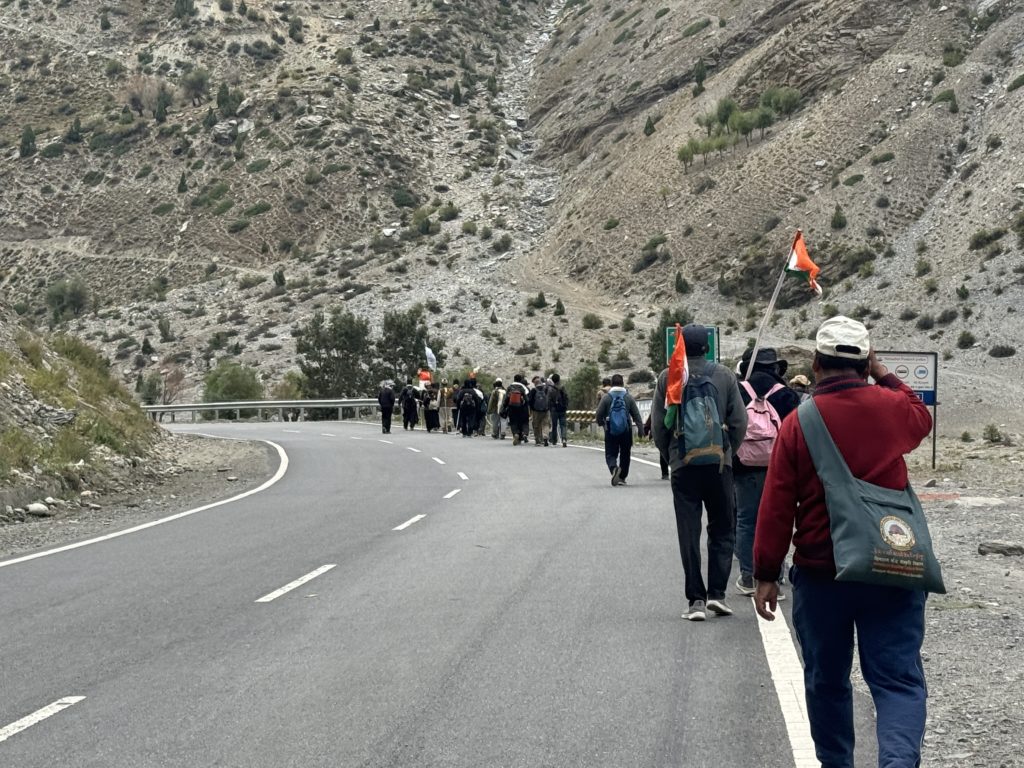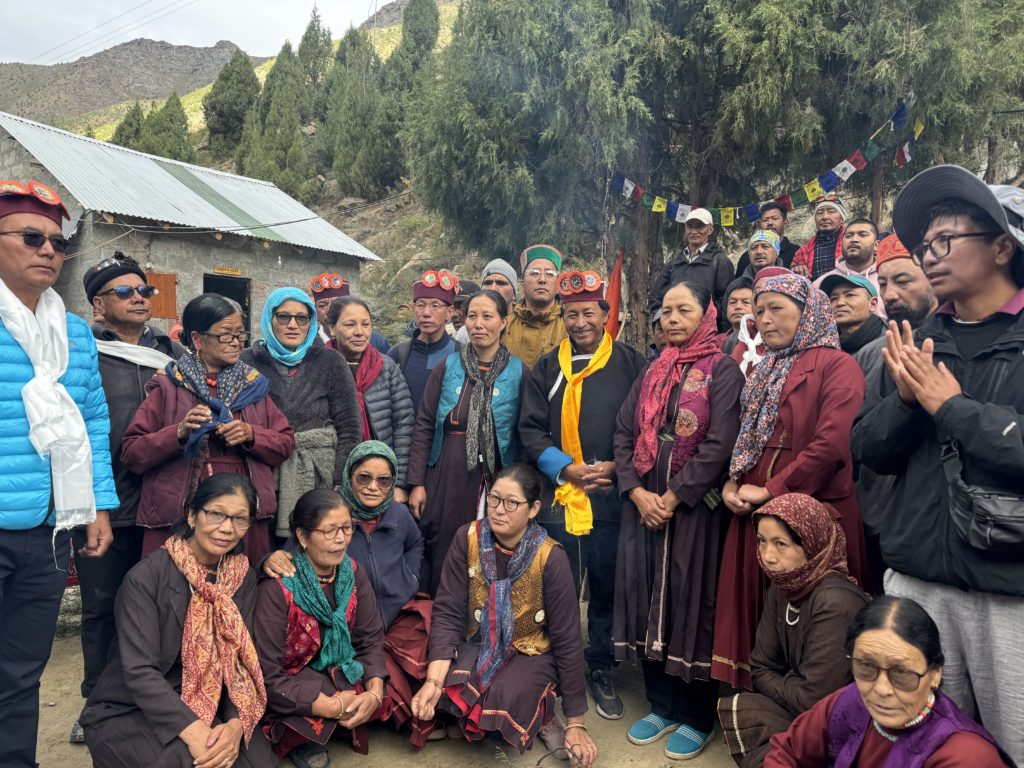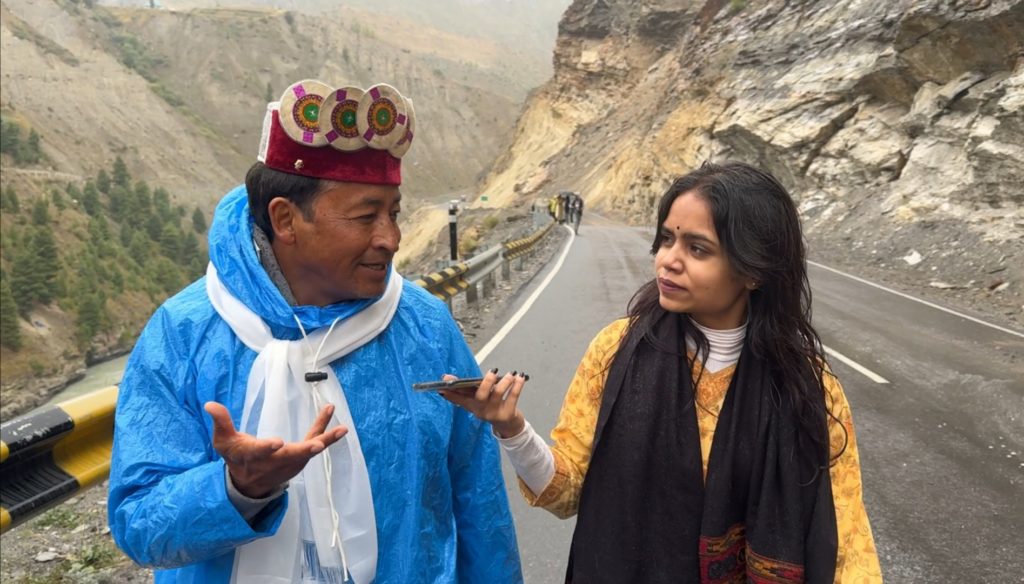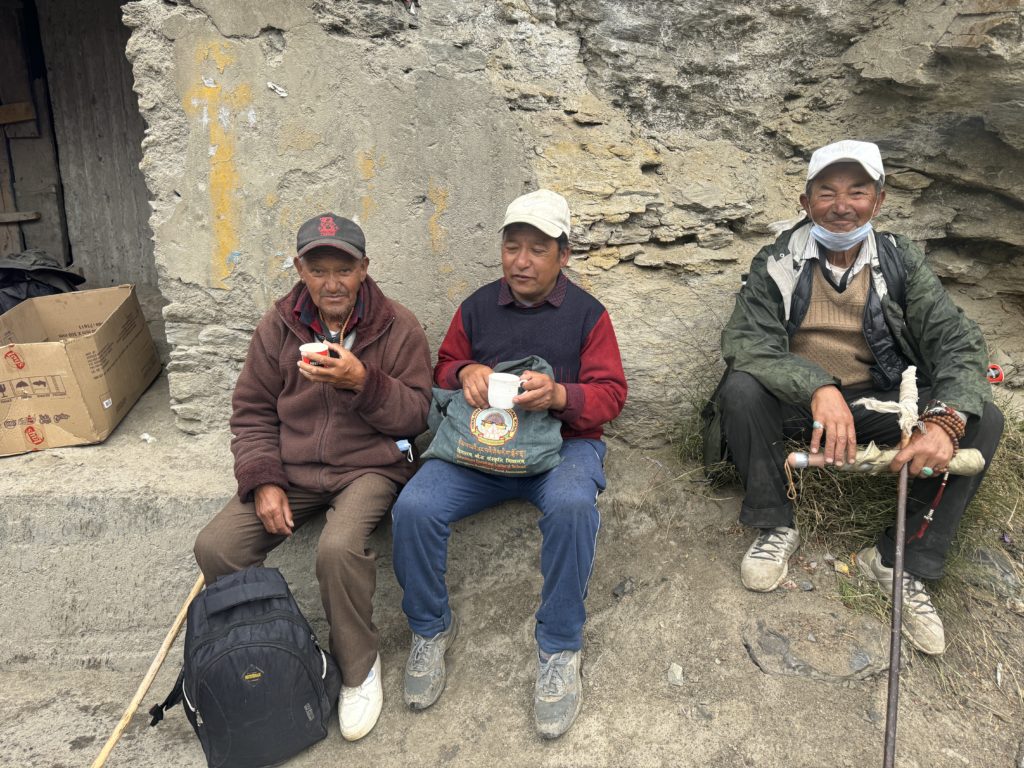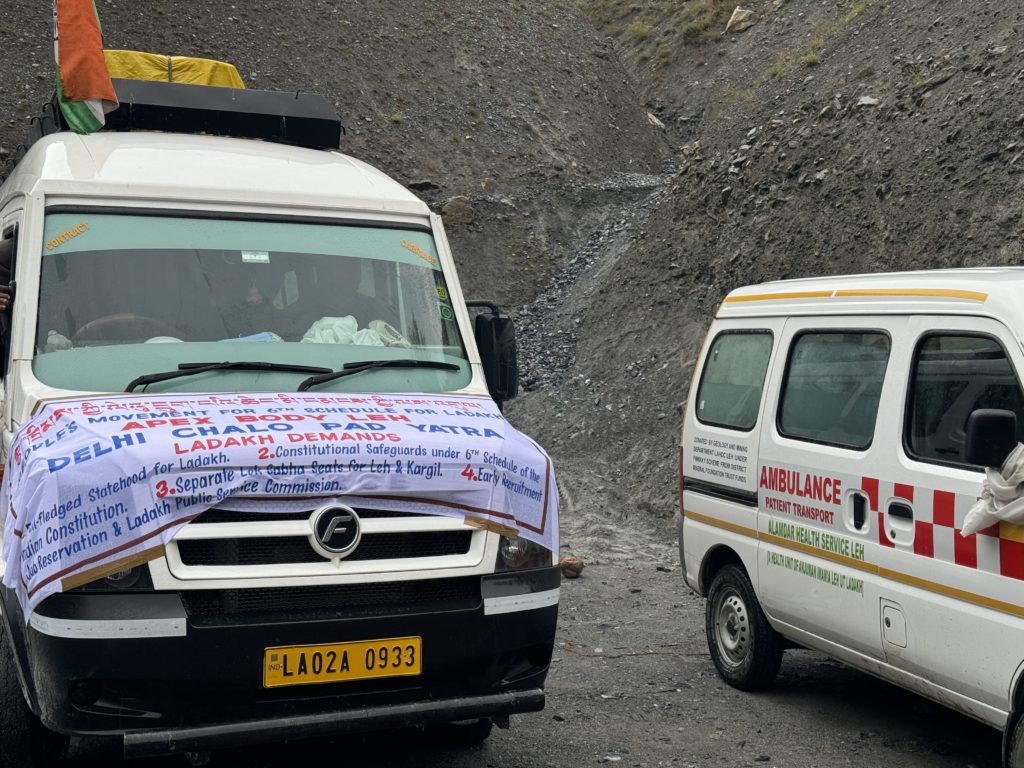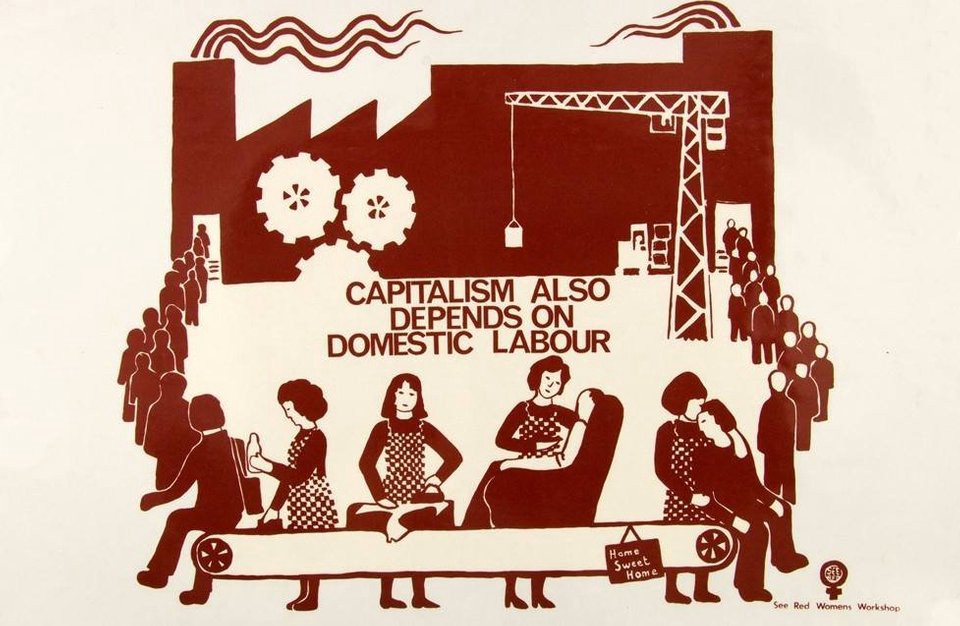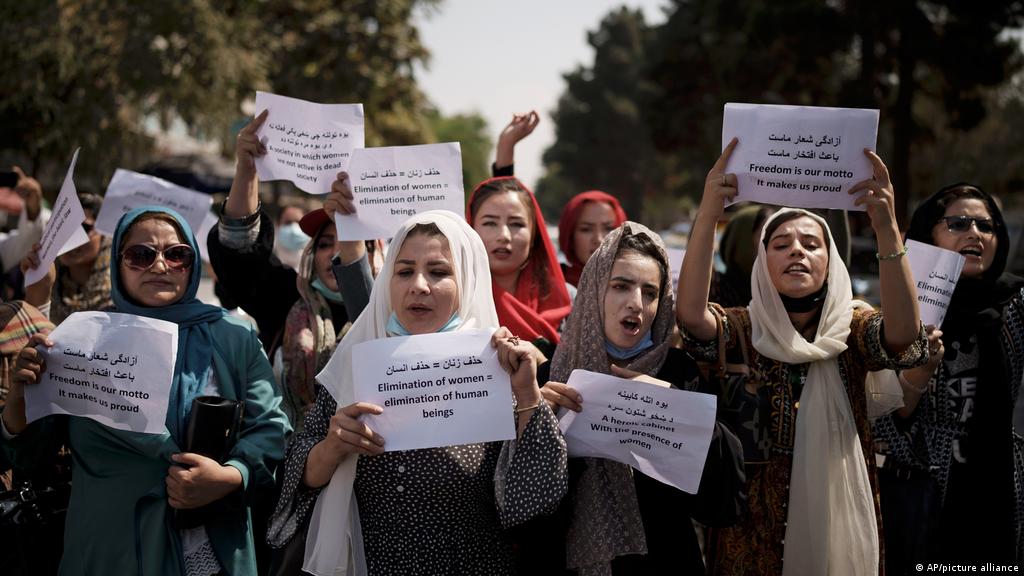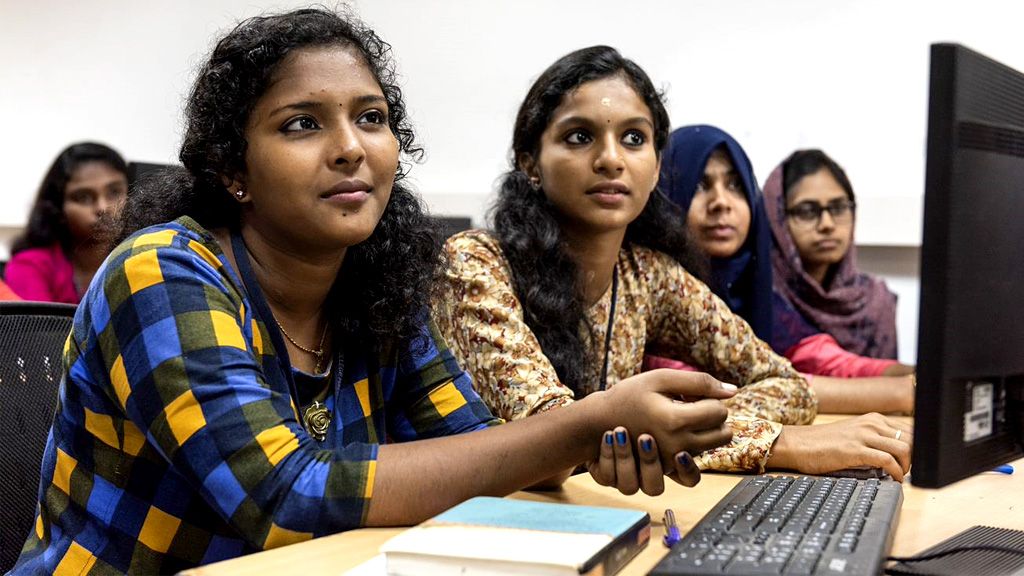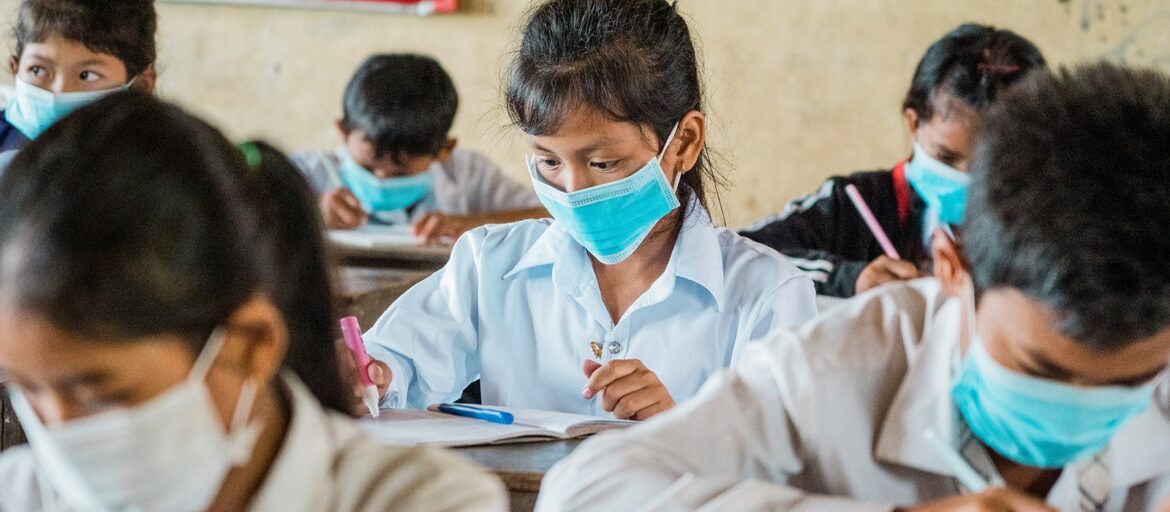Ground Reporting by Kashish Singh
Written by Avani Bansal & Parika Singh
Torrential rain poured over his blue raincoat as environmentalist Sonam Wangchuk walked on the 15th day of the Delhi Chalo Padyatra. Spanning nearly 1000 km from the mountains of Leh to the capital city of New Delhi, the Ramon Magsaysay Award winner led over 75 Ladakh residents through the unrelenting terrains of Himachal Pradesh to reach Delhi by 2nd October, 2024. “It’s all in the mind”, Mr. Wangchuk declared in an exclusive interview with The Womb in Lahaul, when asked of the difficulties they are facing while on the way. Adorning a traditional Himachali topi and a white scarf, he was not fazed by the hardships they encountered during the march.
“Yes, we found snow on Tanglang La, frozen routes on Baralacha La, now rain, and I’m sure very hot climate as we go down.” But they knew what to expect, what was at stake. This is why the two district councils of Leh and Kargil under the Apex Body (a group of stakeholders who are asking for statehood or 6th Schedule status for Ladakh), came together to organize this foot march when Mr. Wangchuk’s 21-day fast in March failed to yield the desired result. When the separation of Ladakh from Jammu and Kashmir was announced in 2019 (via the Jammu & Kashmir Reorganisation Act, 2019), the people of Ladakh rejoiced. They hoped to be declared a separate state with the power to govern themselves and adjudicate on their unique geographical and climatic issues. At the least, they thought they would finally be able to have a say in the affairs of the state and issues that impact them – land use, terms and conditions of corporate entry into Ladakh, mineral use, etc. Their anticipation soon turned into despair as their pleas for having a say in the issues that affect them remained ignored, while handing over unilateral powers to the Central Government over all legislative and executive issues, after declaration of Ladakh as a UT.
From Hills To The Plains: A March For Constitutional Rights
Now, six years later, the Ladakhi people have taken to the streets for their constitutional rights of representation, employment, and preservation of environmental heritage. In the absence of statehood, or even a legislature, the Central Government assured them of their inclusion in the 6th schedule of the Indian Constitution- a protection that is currently accorded to the tribal majority states of Assam, Meghalaya, Tripura, and Mizoram and grants them the power of self-governance through Autonomous Development Councils. Grant of 6th Schedule status has a pre-requisite of a tribal majority in the said area, which Ladakh fulfils given that the National Commission for Scheduled Tribes estimates a 97% tribal population in Ladakh.
All the Union Territories in India have a different administrative and bureaucratic structure. Delhi for instance while being a UT also has a legislature, thus affording the right to have an elected legislature and government by the people of Delhi. This is what the people of Ladakh are demanding. Either give them a full-fledged state status, or allow them the option of elected legislature while being a UT or atleast give them a 6th Schedule status in the Constitution which will allow them representation in all decision-making. At the moment, both Kargil and Leh have an Autonomous Council with 24 elected and 4 nominated representatives but they don’t really have any law making powers or any real authority so to say. All this will change if the Central Government was to give the 6th schedule status to Ladakh. Now, BJP had promised the 6th Schedule status to Ladakh earlier but then dropped it from its Manifesto during the Lok Sabha Elections of 2024, thereby renegading on its promise. INC on the other hand included it in their 2024 National Manifesto.
“More than demands, our main thing is to remind of the assurances and pledges that the government or the ruling party has made to Ladakh about safeguards to Ladakh under 6th schedule, which covers safeguarding its culture, environment, land, and so on”, Mr. Wangchuk explained. He continued, “Then Ladakh ofcourse wants to appeal for restoration of democracy in Ladakh as well, just like any part of India and Jammu and Kashmir. Ladakh has no public representatives to represent them. It’s just a bureaucratic rule. So those are the two main ones.”
‘Ladakh Has The Second Highest Unemployment Rate’
Through the 18th Lok Sabha elections in 2024, Ladakh was permitted to send a single Lok Sabha representative, although the composition and needs of the districts of Leh and Kargil greatly vary. Leh is situated at a higher altitude than Kargil and experiences a climate equivalent to a cold desert, Kargil is at a lower altitude and has more temperate climatic conditions. Culturally, a largely Buddhist population resides in Leh while Kargil finds itself housing a largely Muslim population. Together though, the territory is facing an acute unemployment crisis. Therefore one of the demands of the ‘Delhi Chalo Padyatra’ led by Mr. Wangchuk is to have atleast two Lok Sabha Representatives, one each from Kargil and Leh.
Picture Credits: The Womb Team
The Government through X (formerly Twitter) last year, stated that they will soon have five new additional districts in Ladakh – Zanskar, Drass, Sham, Nubra, and Changthang to increase the representation by 2028. But thus far, there has been no official announcement in this regard and therefore it remains a mere promise, or distraction and attempt to kill the movement as per some locals.
“Ladakh, according to some surveys, has the second highest unemployment rate among the educated”, Mr. Wangchuk revealed while elaborating upon the requirement of the Public Service Commission and early recruitment opportunities for Ladakhi youth.
Women Become The Initial Impact Population Of Climate Change
Since men relied upon seasonal tourism and were forced to travel great distances in search of employment, the burden of agriculture and animal husbandry fell on the determined shoulders of women. Many of whom proudly marched alongside to be heard. “Here, we have women of all age groups, from young to old, just like men. However, women have more responsibilities, so many had to go back to take care of their homes. Others went and came back because their heart is here.”
Picture Credits: The Womb Team
He further highlighted, “Even in their lives they have multiple roles to play, especially in farming, which gets affected by climate change the most, which in turn affects their work tremendously.” As farmers and cattle herders, the current water scarcity was depleting their animal population and leaving their fields barren. The Women’s Alliance of Ladakh has taken it upon itself to preserve and promote traditional water harvesting techniques to alleviate the catastrophic impact of low snowfall and melting glaciers in the Hindu Kush mountains. A cause enthusiastically supported by Mr. Wangchuk.
“As an environmentalist, for me, that’s very important. To protect all of Himalayas with whatever is possible constitutionally- existing or by creating.”
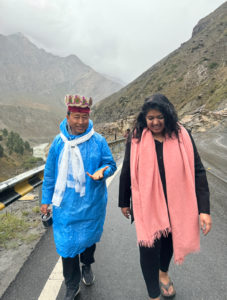
While people in Ladakh, particularly women, become the initial impact population of climate change in the Himalayas, it will eventually cascade beyond state and regional lines and encompass the very survival of the human species.
Mr. Wangchuk considers this ‘Delhi Chalo Padyatra’ from Leh to Delhi, a political exercise in its purest form. He clarified, “It could be broadly called political but it is not party-political. We are welcoming people from all parties, all regions, all religions of India.” In fact, those marching eagerly await the involvement of the ruling party itself, which they believe, had the right intentions when they separated Ladakh, but then the BJP Government did not see complete what they started.
“We have been making our points in the most peaceful ways possible. This will be a kind of message to the nation whether peaceful appeals have a place in Indian democracy or not.”
Moreover, the conclusion of the march on 2nd October aimed to draw a parallel with the global example of non-violent protests set by Mahatma Gandhi in the Indian freedom struggle. Mr. Wangchuk and the people of Ladakh were cautiously optimistic of the government’s response. He justified, “Firstly, it is a very peaceful march- what Mahatma Gandhi has shown us. India is a world leader, vishvaguru, in this path of peace that India has shown the world, India stands true to it. Secondly, it is only reminding what the government had assured us, promised us, pledged to us in various manifestos so we very much hope that things will be good.”
The Religious And Geographical Nuance Adds Complexity To Ladakh Issue
The main religious groups in Ladakh are Muslims (mainly Shias) and Buddhists (mainly Tibetan Buddhists) with a small minority of Hindus. As per an earlier Census (2011), Hindus were shown to be about 12 percent but the locals informed us that this was due to the fact that even the army personnel stationed in Ladakh were counted in the Census, whereas given their temporary posting, they shouldn’t have been included in the Census.
Therefore there is also a religious angle to the whole issue. With Muslims and Buddhists both constituting religious minorities in India, but having a majority status in Ladakh, the ruling dispensation’s view on Ladakh will have to be scrutinised along the religious lens as well.
Since Ladakh has traditionally been under the ruling powers in Jammu and Kashmir, which is Muslim dominated, the Leh region of Ladakh has aspirations for a Buddhist majority say in their affairs, while Kargil, which is Shia dominated (unlike Kashmir which is Sunni dominated) may want to have their own say. If the Central Government were to come true on forming five new districts alongside Leh and Kargil, then five of them would be Buddhist dominated. Therefore the overall composition of the administrative structure of Ladakh does not seem bereft of the political, religious, and corporate interests.
For instance, with Uranium being found in high concentration in Ladakh, now makes it a subject matter of further interest unlike before. The investment of about 20000 crores plus in setting up a solar transmission line in Ladakh, by Solar Energy Corporation of India (SECI) in Ladakh, gives rise to the concern that it might be soon handed over to big corporates, thereby taking away any negotiation powers of the people of Ladakh. But even if this solar project is handed over to big corporates, wouldn’t that atleast bring employment to the people of Ladakh – which is one of the demands of the Delhi Chalo Padyatra group? Yes, but at what costs – most tribes in Ladakh are nomadic, relying on pasture lands for their grazing herds of sheep. Solar power plants, as one member of the Apex Body explained, usually has installations of solar panels at the height of four feet, which prevents the movement of the grazing herds. Now if people of Ladakh have 6th schedule status, they will be able to negotiate for installation of solar panels at the height of atleast 8 feet. Therefore, the demand to have a say is not just at a superficial level, but one that has major ramifications for the everyday lives of all Ladakhis.
1000 kms from Rajghat, those who are walking in the Delhi Chalo Padyatra dream of a Ladakh with bountiful snow, lush fields of barley, and their own legislative assembly. Whether the government will heed their demands and welcome them in Delhi or disregard them entirely as climate change wreaks havoc on the tip of the country will be made clear at the end of the march. Mr. Wangchuk is prepared for another fast if it came to that but was steadfast in his belief in the democratic foundations laid down by the Father of the Nation. Keeping that in mind, we march along with him for the rights of Ladakh and the constitutional freedoms granted to every citizen in this country.
Women In Ladakh Aren’t Just Passive Bearers Of Patriarchy
This might be the very first time that along with asking for democratic rights – a say in their governance affairs, a people are walking for climate change and thereby putting environment right at the heart of politics in India. But the issues of Ladakh are also about cultural and identity politics as much as there is the additional complexity of its geographical location, bound by Pakistan and China on two different sides.
The gender lens in all of this is also especially crucial given the role of women in Ladakhi society, where they have always played the role of a catalyst of change – as active agents instead of passive bearers of patriarchy.
When the Yatra will reach New Delhi at Rajghat on 2nd October, it will have to be seen as to the reception they receive, but here in Himachal, people are very welcoming and sympathetic to the cause of Mr. Wangchuk.
What if the government does not yield to the demands of the Ladakhi people? Well, one solid step a time, without being too attached to the consequences is the spiritualist idea that Mr. Wangchuk seems to embody for the time-being. How he and the movement of the Ladakhi people will pick on from here, after already undertaking a 21 day climate fast earlier, remains to be seen. But the fate of any movement either strengthens or weakens all of those who struggle for democracy. It is this collective hope that makes this Delhi Chalo Padyatra more than just of interest to the Ladakhis. All our fate seems to be connected.
“The cause of liberty becomes a mockery if the price to be paid is the wholesale destruction of those who are to enjoy liberty.” – Mohandas Karamchand Gandhi


